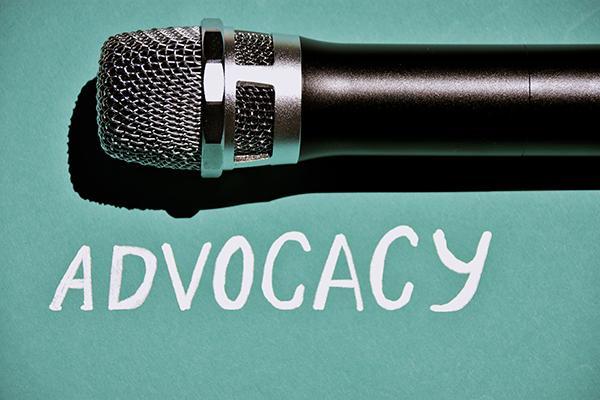The Status of CPAA Advocacy on Three Major Member Priorities
Our members have expressed many concerns, but the three that surface most often of late are safety, leadership, and compensation. The update below lays out our progress and continuing work on these three issues.
Safety
Progress
Since the onset of the COVID-19 closures, we sought state intervention that compelled CPS to add medically vulnerable administrators to the list of report-to-work exceptions, and we won the fight against misinformation about the use of benefit days. We developed a strategy that helped several medically vulnerable members counter attempts to coerce them to report to school buildings. CPS also consolidated food distribution sights, and CPAA was a significant voice calling for such consolidation.
Current Work: Safe Distribution of Food and Remote Learning Tools
Our members want to contribute their time and energy to efforts to serve students and families. However, CPS is obligated to provide the following to keep school leaders and other staff members safe while they serve:
Guidance: Clear written procedures
Training: Instruction that helps them master the procedures
Assistance: Trained personnel who help principals implement procedures with fidelity at each location
Supplies: Materials needed to establish and maintain a safe distribution process (Masks, Gloves, Hand Sanitizer, Signage [e.g., "stay six feet apart,"], and spacing markers at distribution sights)
Stores like Target and Aldi's are taking far greater steps to protect check-out cashiers than CPS is taking to protect principals and food and nutrition workers. Our school leaders want to do their part, but we also want our employer to do its part to keep us safe as we serve. So far, it appears CPS has not met this essential duty.
Next Steps: Data Collection and Legal Action
As with most issues, our advocacy for members is more effective when we collect reliable data. The data allows us to establish a position based on facts and defend that position effectively. Toward that end, school leaders will be getting a survey in the next 24 hours about concerns regarding the distribution of food and remote learning tools. We will process the results as soon as possible and make actionable demands based on the results. We're also actively developing legal remedies designed to compel CPS to act should they fail to make the recommended changes on their own.
Instructional Leadership
The Issue
Members have expressed concerns about both a lack of instructional leadership at a district level and a failure to empower local instructional leadership at a school and network level. These concerns include technology distribution, inadequate district communication, lack of guidance on effective remote educational leadership, managing teaching staff during distance learning, and other related matters.
Progress
CPAA hosted two webinars in response to this concern in partnership with the American Federation of School Administrators (AFSA). One webinar focused on overall remote learning strategies, and the other focused on a particular remote learning platform.
Next Steps
There is a need to inventory the effective practices of school leaders and conduct online conferences to enable school leaders to learn from those best practices, both locally and nationally, as well as promote solidarity during this time of uncertainty. We will poll school leaders to determine the extent to which CPS is or is not doing this work and determine where we can fill in the gaps.
Compensation
The Issue
There are several compensation issues, with the most recent being the low 10% compensation offered to administrators (roughly $50 per day) when other staff members are paid 50% and teachers who report in place of a principal earn about $200 per day for the same work. This latest pay gap is on top of the existing discrepancy in administrator pay where more than 9,500 experienced teachers earn an average of $70/hr while the principal and assistant principal averages are $60/hr and $50/hr, respectively.
Progress
We believe we can be more effective on the 10% issue if we couple it with the existing hourly wage discrepancy. In the fall, we compelled CPS to release hourly pay rates, analyzed those rates, developed graphic materials for a campaign to raise your salary (see graphic below), signed on more than 50 administrators for a compensation working group, and filed a bill in Springfield to change Illinois law to allow for school administrators to form a union and have collective bargaining rights. We surveyed our members on the 10% issue, and we submitted the results of that survey to the CPS Board and CEO with a demand that administrators be paid the full 50% rate for reporting to school buildings during the COVID-19 pandemic.
Next Steps
While we've been able to compel CPS to change on some issues, they don't seem to want to budge on pay. It's as if they want to insult principals and AP's. So we are actively working with government oversight agencies to assess the feasibility of legal strategies aimed at compelling CPS to pay school administrators fairly. In addition to this, it may take organized collective action on the part of CPAA together with our members. As much as I emphasize this issue to the CPS Board and CEO, they're not hearing from school leaders at all, which makes them feel like they can ignore it. We have to develop a way to get school leaders to express this issue in a safe way that eliminates or drastically reduces the retaliation risk factor. That means having large numbers of us express it together in a unified way. They can go after one principal, but they can't go after all of us. Toward that end, we will be working with key administrators in each network to get a critical mass of principals and AP's involved in problem-solving around this issue. This appears to be a long-term campaign, but I am confident we have it within us to win.
Summary
Our members have expressed concerns over safety, leadership, and compensation. CPAA has taken steps to address all three. We've made some progress on some and continue to push forward on others. Safety is where we're putting most of our energy at this point. Toward that end, you will receive a survey designed to help us determine and defend our safety-related demands. This will be followed by a different survey related to the non-safety concerns around the distribution of educational technology and the issue of educational leadership in general. While this work is happening, we will continue to work behind the scenes in the networks and with our attorneys on a multifaceted strategy to address compensation inadequacies.

